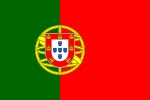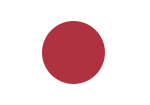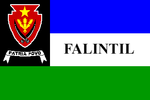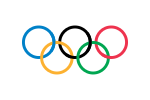Flag of East Timor
You can help expand this article with text translated from the corresponding article in German. (December 2010) Click [show] for important translation instructions.
|
 | |
| Use | National flag and ensign |
|---|---|
| Proportion | 1:2 |
| Adopted | November 28, 1975 (de facto) May 19, 2002 (de jure) |
| Design | A red field with the black isosceles triangle based on the hoist-side bearing a white five-pointed star in the center superimposed on the larger yellow triangle, also based on the hoist-side, that extends to the center of the flag. |
| Designed by | Natalino Leitão |
The national flag of East Timor (Portuguese: Bandeira de Timor-Leste) is one of the official symbols of East Timor. It consists of a red field with the black isosceles triangle based on the hoist-side bearing a white five-pointed star in the center superimposed on the larger yellow triangle, also based on the hoist-side, that extends to the center of the flag.

Official description of the flag
According to the Constitution of the Democratic Republic of East Timor, Part I, Section 15:
- "The national flag is rectangular and is formed by two isosceles triangles, the bases of which are overlapping. One triangle is black and its height is equal to one-third of the length overlapped to the yellow triangle, whose height is equal to half the length of the Flag. In the centre of the black triangle there is a white star of five ends, meaning the light that guides. The white star has one of its ends turned towards the left side end of the flag. The remaining part of the flag is red."[1]
With the constitution of the Democratic Republic of Timor-Leste on November 28, 1975, the flag was officially adopted for the first time. The symbolism of this flag was given the following meaning:
- Black represents the four centuries of colonial oppression.
- The yellow arrowhead represents "the traces of colonialism in East Timor's history" and the struggle for independence.
- Red stands for the spilled blood of the population.
- The white star symbolises hope for a better future.
Today, both the colours and their meanings are specified in the new Constitution of the Democratic Republic of Timor-Leste of 2002 (Part I, Section 15):[1]
- Black symbolises obscurantism, which must be overcome.
- Yellow represents the wealth of the country.
- Red symbolises the struggle for national liberation.
- The white star, or "the light that guides", is white to represent peace.
Flags are powerful symbols in East Timorese culture and have a high cultural significance. They play a significant role in East Timorese identification as a community. Flags are automatically attributed a symbolic power, making them a sacred object.[2]
Variations

(according to the flag of the Independence Ceremony with straight star)
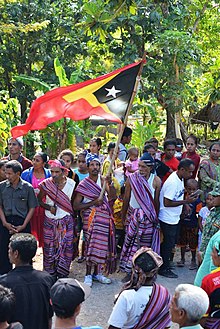
The tones of the individual colours are not precisely defined in the Constitution. The Independence Day Celebrations Committee of the United Nations Transitional Administration for East Timor (UNTAET) indicated light orange (PMS 123) as the correct shade of yellow, which is usually found on official flags. In flag illustrations in books or on the internet, but also in flags commonly used in East Timor, a light yellow is also widely used. According to the UNTAET source, the red corresponds to the tone PMS 485. Here, too, there are versions with a light red in East Timor. Even darker versions only appear as flag images, but not as flags. Although UNTAET gives the size of the black triangle as a quarter of the flag's length, the existing flags and illustrations all have a triangle with a size of one third.
There is disagreement about the correct proportions of the flag. While the 1975 flag always had the 2:3 ratio common in most of Europe, flags with a ratio of 1:2 also appeared in official use with the independence of East Timor. The reason for this is presumably that these flags are manufactured in Australia, where the proportions of 1:2 are customary. A clear uniform regulation was initially pending,[3] but Law 02/2007 on the national symbols shows a picture of a flag with a 1:2 ratio in the appendix.[3] Furthermore, the law lists in Article 4 the different formats of the flag in which the cloth flag should hang in public offices, barracks, private and state schools. Type 1 consists of a cloth 45 centimetres wide, Type 2 consists of a cloth 90 centimetres wide, Type 3 135 centimetres wide and so on up to Type 7 315 centimetres wide. However, in paragraph 2, the article explicitly allows smaller and larger flags, as well as those with sizes in between, as long as the proportions are respected.[3]
Flags are often seen with the top of the star pointing straight up. This was often the case with the 1975 flag. But today's constitution clearly states that the star should point with a tip to the upper left corner. This is also followed by the illustration in Law 02/2007.
The flag of East Timor used for the independence celebration on 20 May 2002 had a straight star despite the clear specifications.[4][5] It also had an aspect ratio of 1:2 and used the bright yellow in combination with the bright red.
- Variants of East Timor's flags
History
Monarchical Era (1702–1910)

Until independence from Portugal, the colony of Portuguese Timor used only the flag of Portugal. The Liurais, the traditional rulers of Timor, drew part of their claim to rule from sacred (lulik) objects owned by the ruling families. When the Portuguese subjugated the Timorese, they gave the Liurais as vassals the Portuguese flag, which in the eyes of the Timorese, just like the flagpole, became sacred objects themselves, legitimising the rule of the Portuguese and the Liurais loyal to them. Especially in the culture of the Mambai, the flag cult took on a central significance. According to their myth of origin, the world order is created by two brothers. The elder brother, from whom the Timorese descend, holds the ritual power over the cosmos. The younger brother has the power over the social order. The non-Timorese peoples, in this case the Portuguese, are descended from this brother. The myth tells of the loss, search and recovery of a lost, sacred object, namely the Portuguese flag. This sacred meaning of the blue and white flag led to some problems when the flag of Portugal was changed in 1910 when the country changed from a monarchy to a republic.[6][7]
Republican Era (1911–1975)

On 15 February 1946, the Angola arrived at the Portuguese naval base of Alcântara from Portuguese Timor. She brought home Portuguese who had lived in the colony during the Battle of Timor in the Second World War. A white flag with the Portuguese Timorese coat of arms on a green and red cross appears in the crowd.[8]
In 1961, a small, left-oriented Timorese resistance movement - the Bureau de Luta pela Libertação de Timor (BLLT) - used a flag that already had some elements of today's national flag. It consisted of a yellow-bordered black disc with a five-pointed white star on red cloth. Later, the BLLT established a short-lived government-in-exile in Jakarta called the United Republic of Timor, which used the same flag.
In 1967, there were proposals for separate flags for the individual Portuguese colonies, with the coat of arms of the colony added to the lower right of the flag of Portugal. However, the proposals were never implemented.[9]
Independence (1974-1975)

 Flag of East Timor in a 2:3 ratio as it was used in 1975
Flag of East Timor in a 2:3 ratio as it was used in 1975After the Carnation Revolution in Portugal, parties were also allowed in Portuguese Timor. East Timor's dominant leftist party, the Frente Revolucionária de Timor-Leste Independente (Fretilin) used the same colours as the BLLT in its party flag and also the white star on a black background. Apart from their political orientation, there are no links between the two organisations. To what extent the flag served as a model or simply common socialist symbols, such as the five-pointed star and the colour red, were used on the party flag is not clear. According to legend, the resistance fighter Natalino Leitão designed the current national flag based on the Fretilin flag the night before the proclamation of independence from Portugal on 28 November 1975. The incipient occupation of the country by Indonesia had put the Fretilin on the spot. Today, 28 November is East Timor's bank holidays, when official buildings are flagged. Only nine days after the declaration of independence, Indonesia openly started to invade East Timor. Natalino Leitão was killed in the process.
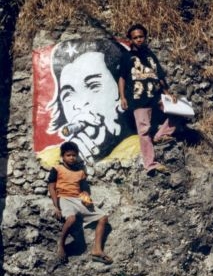
The declaration of independence was only recognised by a few countries. Politically, Indonesia was supported by the United States and Australia, as they feared a second Cuba due to the leftist orientation of Fretilin. The extent to which the red basic colour and the certain similarity of the flag design to Cuba's flag supported this assumption is debatable. That the flag of Cuba or the flag of Mozambique were models for Leitão's triangular design can only be assumed. At least there were and still are sympathies for Cuba and especially for Ernesto Che Guevara in East Timor. Fretilin already had close relations with Mozambique and its ruling party FRELIMO.
- Socialist chevron flags
-
Flag of FRELIMO
-
Flag of Mozambique
-
Flag of Cuba
Indonesian occupation (1975–1999)


 Variant of the flag of the National Council of Maubere Resistance with the full name of the organisation
Variant of the flag of the National Council of Maubere Resistance with the full name of the organisationBeyond party political affiliation, the flag of the Fretilin became more and more a symbol of the organisation of resistance for the people during the occupation, and the national flag of 1975 a symbol of the people and their urge for independence. The occupation forces reacted to the use of the flags with severe repression. The use of flags other than the flag of Indonesia was forbidden.[2] Until 1999, East Timor was governed by Indonesia as a province, while internationally it was considered a "dependent territory under Portuguese administration". As an Indonesian province, it was also given a provincial flag, but this was only used in the governor's office, as was customary with all provincial flags. The flag of Timor Timur, as East Timor was officially called at the time, displayed the provincial coat of arms on an orange background.[10] When a Portuguese parliamentary delegation was due to visit East Timor in 1989, the Indonesian government distributed 30,000 Indonesian flags to be placed on the homes of Dili. This was intended to demonstrate the integration of East Timor into Indonesia.[2]

 Variant of the flag of Falintil in the National Museum of the Resistance
Variant of the flag of Falintil in the National Museum of the ResistanceThe armed resistance against the Indonesians was led by Falintil, which was originally the military arm of Fretilin. In 1987, its leader Xanana Gusmão transformed Falintil into a national army of East Timorese resistance. He designed a new blue-white-green-black flag of the Falintil.[11] The Conselho Nacional de Resistência Timorense (CNRT), the umbrella organisation of East Timorese resistance founded in 1998, adopted the Falintil flag as a politically neutral symbol. They replaced the lettering "FALINTIL" with "CNRT" and changed the symbols in the shield. The Falintil used a yellow five-pointed star, two traditional swords (suriks) and three feathers. The CNRT used a spear and two arrows instead of the feathers, and the star was now white. The Falintil adopted this version of the coat of arms for its flag relatively soon. The shield in the flag of the CNRT is also found in slightly modified form with the same elements in the later first coat of arms of East Timor (2002-2006) after the restoration of independence. In the Falintil camps, it was strictly forbidden to walk through the shadow of the flag. Allegedly, this rule dates back to colonial times, when Timorese were beaten up if they walked through the shadow of the flag of Portugal.[12]
In the 1999 independence referendum in East Timor, the population could choose between full independence and remaining part of Indonesia as the Special Autonomous Region of East Timor (SARET). Article 20 of SARET's draft constitution provided for the possibility of adopting its own coat of arms, but not its own flag. Instead, the flag of Indonesia was to continue to be used.[13]
Contemporary Era (1990–Present)
When the United Nations took control in East Timor after the referendum, they used the United Nations flag. At the Sydney Olympics in 2000, four East Timorese athletes participated as Independent Olympic Athletes under the flag of the Olympic Games, as East Timor was not yet independent and there was no National Olympic Committee.
The flag of East Timor was adopted in 2002. It is the same as the flag that was originally adopted when the country declared its independence from Portugal in 1975, nine days before being invaded by Indonesia.[14] At midnight on 19 May 2002, and during the first moments of Independence Day the next day, the United Nations flag was lowered and the flag of an independent East Timor was raised. The flag was officially reinstated on 20 May 2002, when the United Nations flag was taken down at midnight and the East Timorese flag was hoisted. According to the various local accounts, people were in tears for days and produced a special hand woven textile (Tais) in which to wrap the downed UN flag,[15] as if it was a death shroud, but also to protect it and to preserve its mystical ‘sacred’ power (luli).[16] This flag became a symbol of liberation and protection for the Timorese.[16]
Alternative flag debate
A different flag had been suggested by the representatives of the Timorese political parties and organisations during the first East Timorese National Convention held in April 1998 in Portugal. This flag was originally the flag of CNRT (Conselho Nacional de Resistência Timorense, National Council of Timorese Resistance). Because of CNRT's popularity, there was a consensus of the participants of the convention to adopt their flag as a temporary flag for East Timor. It was replaced by the former design of 1975 in 2002.
A discussion began about which flag a future, independent East Timor should use. There were voices calling for the national flag to be changed, as the 1975 flag was a symbol of Fretilin. Already at the first East Timorese National Convention in Peniche (Portugal) from 23 to 27 April 1998, the delegates of the Timorese parties decided in favour of the flag of the CNRT as the provisional flag of East Timor. In the 1999 referendum on independence, the UN had accordingly depicted on the ballot papers the Indonesian flag for remaining with Indonesia and the flag of the CNRT for independence as a decision-making aid.[17][18] The veterans' organisation CPD-RDTL accused Fretilin of monopolising the current national flag. The group Colimau 2000 demanded that a Christian cross be included in the national flag to symbolise the importance of Catholicism in East Timor. However, most parties and the majority of the population do not support a change. They saw the national flag as a symbol of suffering in the struggle for independence, regardless of its authorship.[2]
At demonstrations in and outside East Timor, almost only the old 1975 flag and the Fretilin flag were displayed. The very similarity of the two flags was recognised in respect for the merits of Fretilin in the struggle for independence.[2] So in the end, the flag of 1975 was used. Another reason was probably the overwhelming majority of Fretilin in the new parliament. The Socialist Party of Timor (PST) had also demanded the red-yellow-black flag. The flag of the CNRT, as a symbol of the unity of the East Timorese, did not have the same popular support in the end.[2] The Timor Leste Defence Force (F-FDTL), which absorbed the FALINTIL, now use the FALINTIL flag and coat of arms in the spear-and-arrows version.
Gallery
-
 Flag of Japan used in during Japan's occupation of Portuguese Timor (1942–1945)
Flag of Japan used in during Japan's occupation of Portuguese Timor (1942–1945) -
 Flag of Indonesia used by the Provisional Government of East Timor (1975-1976) during the occupation. (1976-1999)
Flag of Indonesia used by the Provisional Government of East Timor (1975-1976) during the occupation. (1976-1999) -
 Provincial flag of Timor Timur (1976–1999)
Provincial flag of Timor Timur (1976–1999) -
Flag of the F-FDTL
Subnational flags

Some of the Municipalities of East Timor have adopted their own flags. Originally, East Timor's municipalities did not have their own flags. However, during the colonial period between 1962 and 1975, Dili was the only place in Portuguese Timor to have a municipal flag that corresponded in design to the Portuguese municipal flags. It was green and white with eight stripes and showed the town's coat of arms in the centre: Red, a sandalwood tree in silver between two bundles of arrows with halberds and hunting spears. Above the escutcheon, a brick crown with five towers representing Dili's status as the capital of an overseas province. In addition, a banner with the words "O Sol logo em nascendo vê primeiro" (Where the sun was first born).[20][21] As a sign of solidarity, Dili's flag was hung in Lisbon's city hall in 1991.[22]
Since 2015, the municipalities have adopted logos and coats of arms as symbols, which are then also presented on flags with a single-colour background. For example, the Oe-Cusse Ambeno Special Administrative Region has a green flag with a logo and the municipality of Manufahi has an orange flag with its coat of arms. Baucau displays its coat of arms on a white background.
- Municipalities Logo and Flags of East Timor
-
Logo Aileu
-
 Flag of Baucau
Flag of Baucau -
Logo of Cova Limas in Tetum und Portuguese
-
Flag of Manufahis
-
 Symbol of Oe-Cusse Ambenos
Symbol of Oe-Cusse Ambenos
See also
References
- ^ a b "CONSTITUTION OF THE DEMOCRATIC REPUBLIC OF EAST TIMOR". Constitution.org. Retrieved 9 January 2018.
- ^ a b c d e f Arthur, Catherine (June 2018). "From Fretilin to freedom: The evolution of the symbolism of Timor-Leste's National flag". Journal of Southeast Asian Studies. 49 – via ResearchGate.
- ^ a b c "Lei No. 02/2007, Símbolos Nacionais (deutsch: Gesetz Nr. 02/2007, Nationale Symbole)" (PDF) (in Portuguese). 6 March 2007. Archived from the original (PDF; 584 kB) on 21 June 2007. Retrieved 15 May 2015.
- ^ "May 2002 ET Postings Menu - Independence Ceremonies". www.etan.org. Retrieved 9 February 2023.
- ^ Flagge bei der Unabhängigkeitsfeier in Suai/Cova Lima, Retrieved on 15 May 2015.
- ^ Geoffrey C. Gunn: Archived 2009-03-24 at the Wayback Machine Technical University of Lisbon (PDF-Date; 805 kB)
- ^ Monika Schlicher: Portugal in Osttimor. Eine kritische Untersuchung zur portugiesischen Kolonialgeschichte in Osttimor 1850 bis 1912. Abera, Hamburg 1996, ISBN 3-931567-08-7, (Abera Network Asia-Pacific 4), (Zugleich: Heidelberg, Univ., Diss., 1994).
- ^ "Os portugueses em Timor na II Guerra Mundial". www.jornaldenegocios.pt (in European Portuguese). Retrieved 9 February 2023.
- ^ "East Timor: flag proposal of 1967". www.fotw.info. Retrieved 9 February 2023.
- ^ "Indonesian provincial flags". www.fotw.info. Retrieved 10 February 2023.
- ^ "Timor-Leste builds National Park Kay Rala Xanana Gusmão « Government of Timor-Leste". timor-leste.gov.tl. Retrieved 10 February 2023.
- ^ Irena Cristalis: East Timor: A Nation's Bitter Dawn. Zed Books Ltd., 2013, [1] at Google Books.
- ^ "Indonesian occupation flags in East Timor". www.fotw.info. Retrieved 10 February 2023.
- ^ Complete Flags of the World. Dorling Kindersley. 1997. p. 279. ISBN 978-1-4093-5371-3.
- ^ Cristalis, Irena (2009). East Timor: A Nation's Bitter Dawn, Second Edition (Revised and Updated, 2nd ed.). USA exclusively by Palgrave Macmillan, London, New York, NY: Zed Books.
- ^ a b Molnar, Andrea K. (2006). "'Died in the Service of Portugal': Legitimacy of Authority and Dynamics of Group Identity among the Atsabe Kemak in East Timor". Journal of Southeast Asian Studies. 37 (2): 335–355. doi:10.2307/20072713?uid=3737864&uid=2129&uid=2&uid=70&uid=4&sid=21103327209711. ISSN 0022-4634.
- ^ UNAMET. "tl011999-zettel" (PDF). Database and Search Engine for Direct Democracy. Retrieved 12 February 2023.
{{cite web}}: CS1 maint: url-status (link) - ^ "UN Poster Icon | reject.jpg". UN.org. Archived from the original on 15 March 2003. Retrieved 12 February 2023.
- ^ "Os portugueses em Timor na II Guerra Mundial". www.jornaldenegocios.pt (in European Portuguese). Retrieved 28 February 2022.
- ^ "Díli District (East Timor)". www.fotw.info. Retrieved 10 February 2023.
- ^ Legislacao.org: Text of the law of 1 October 1962
- ^ "Expectativa Municipal | Ver O Hastear Da Bandeira De Díli Por Autarca Eleito Pelos Timorenses". ANMP - Boletins ANMP [Editio Electronica]. 7 December 1991. Retrieved 10 February 2023.
External links


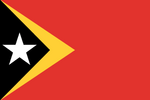


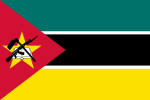





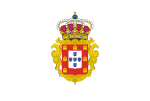
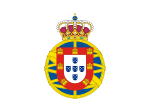

![Unofficial flag of Portuguese Timor (1942-1945)[19]](http://upload.wikimedia.org/wikipedia/commons/thumb/b/bc/Flag_of_Portuguese_Timor_%28unoficial%29.png/150px-Flag_of_Portuguese_Timor_%28unoficial%29.png)
